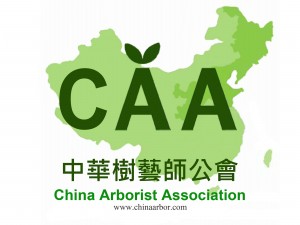CAA (Professionals) — Vitalizing a 400 year tree with foliar fertilizers (400年古樹回春)
國內和台灣的朋友, 請查閱 www.chinaarbor.com 或 “臉書” Facebook (帳號是 “中華樹藝師學會”) 以取得其他文章。 本會的已發表文章都已放棄版權, 任何人可以自由轉載作為教育目的, 但不能作為商業目的盈利。 任何人都可以申請加入本會, 會費全免, 會員名單從不公開。 有意者請將真實姓名、年齡、單位、職銜、最高學歷、電郵地址、和手機號, 電郵到 egc@netvigator.com , 或傳真到+ 852-2679-5338 等待處理。 本會所發表的一切內容, 謹供參考, 並不接受任何責任, 敬請留意。
會員們:
先請各位看一下較早前在香港的一則有關 “400年古樹回春” 的報導:
http://hk.apple.nextmedia.com/realtime/news/20140405/52357233
對此,本會是沒有興趣研究這樹是誰來管理,或 “樹木專家” 是說了甚麼,只有興趣去探討一下,能否採用噴施葉面肥的技術,去令一棵古樹 “回春”。
就報導所述,CAA 現存技術疑問如下:
1. 眾所週知,在沒有葉片的木幹上面噴灑葉面肥,是不能發動休眠芽去制造新葉片的, 否則所有枯木都可以這樣子 "回春"。 葉面肥一般含大量原素 (N, P, K等) 或少量原素 (Fe, Mg, S等) 肥分 ,而不是植物荷爾蒙,沒有啟動生理功能的能力。 如果葉面肥真的混進了植物荷爾蒙來同時使用,則在沒有事先通過深入研究,就使用在一棵400年老的古樹上面,在國際上可能會被認定為高風險的處方,就有如給百歲人瑞馬上試吃長生不老藥的樣子,做法堪輿。
2. 在健康正常生長的葉片上噴施葉面肥,也不一定會被吸收,就等如人在吃飽了以後不再吃的情況一樣,浪費了。 樹木葉片與草本植物不同,普遍存有革質層,要通過其來吸收是不容易。 而且停留在葉面上過剩的葉面肥,可能會引致肥燒中毒,有可能會防礙正常光合作用的進行,也有可能會招惹病虫害,結果是得不償失。
香港的 “樹木專家” 有他們自己一套的 “專業理論”, 但CAA 也會利用已知的國際樹藝知識來作出其他想法。 國際上,樹藝知識是這樣子的從討論來得出結果,以科學去作為判斷標准,而不存在個人喜愛。 CAA 切忌泡制 “一言堂” ,以一大套公衆聽不懂的學術理論,把事實搬來自己這邊廂,為己吶威,打壓其他聲音; 深明這只會是紙包不住火,最終引火自焚罷 .....
謹此致意!
中華樹藝師學會 會長 (www.chinaarbor.com)
歐永森
ASCA 美洲顧問樹藝師學會顧問樹藝師號 RCA#497 (http://isahkchina.blogspot.com/2010/12/isa-hkchina-rac-in-asia.html)
IACA 澳洲顧問樹藝師學會顧問樹藝師號 ACM 0412011 (www.iaca.org.au)
ISA 資深樹藝師/註冊攀樹師號 HK-0174BT (http://isahkchina.blogspot.com/2011/03/isa-hkchina-frist-bcma-in-asia.html)
ISA HK/China 執業樹藝師號 IPA-010908 (http://isahkchina.blogspot.com/2010/04/isa-hkchina-tree-news-1441-report.html)
ISA 認證“樹木風險評估員” (www.isa-arbor.com )
SCMN 專業調解及談判學會註冊調解員號 CM-0044 (http://isahkchina.blogspot.com/2012/01/isa-hkchina-mediation.html)
“如果樹木在設計和種植時犯錯,其護養必然昂貴,而最終也會變成"不定時炸彈" 。 ”
“速成出來的樹木評估員, 只能作出低質量的猜測。 大自然會決定成敗。 ”
----------------------------------------------------------------------------------------------------------------------------------------------------------------------------------------------------------
国内和台湾的朋友, 请查阅 www.chinaarbor.com 或 “脸书” Facebook (帐号是“中华树艺师学会”) 以取得其他文章。 本会的已发表文章都已放弃版权, 任何人可以自由转载作为教育目的, 但不能作为商业目的盈利。 任何人都可以申请加入本会, 会费全免, 会员名单从不公开。 有意者请将真实姓名、年龄、单位、职衔、最高学历、电邮地址、和手机号, 电邮到 egc@netvigator.com , 或传真到 +852-2679-5338 等待处理。 本会所发表的一切内容, 谨供参考, 并不接受任何责任, 敬请留意。
会员们:
先请各位看一下较早前在香港的一则有关 “400年古树回春” 的报导:
http://hk.apple.nextmedia.com/realtime/news/20140405/52357233
对此,本会是没有兴趣研究这树是谁来管理,或 “树木专家” 是说了甚麽,只有兴趣去探讨一下,能否采用喷施叶面肥的技术,去令一棵古树 “回春”。
就报导所述,CAA 现存技术疑问如下:
1. 众所週知,在没有叶片的木幹上面喷灑叶面肥,是不能发动休眠芽去制造新叶片的, 否则所有枯木都可以这样子 "回春"。 叶面肥一般含大量原素 (N, P, K等) 或少量原素 (Fe, Mg, S等) 肥分 ,而不是植物荷尔蒙,没有启动生理功能的能力。 如果叶面肥真的混进了植物荷尔蒙来同时使用,则在没有事先通过深入研究,就使用在一棵400年老的古树上面,在国际上可能会被认定为高风险的处方,就有如给百岁人瑞马上试吃长生不老药的样子,做法堪舆。
2. 在健康正常生长的叶片上喷施叶面肥,也不一定会被吸收,就等如人在吃饱了以後不再吃的情况一样,浪费了。 树木叶片与草本植物不同,普遍存有革质层,要通过其来吸收是不容易。 而且停留在叶面上过剩的叶面肥,可能会引致肥烧中毒,有可能会防碍正常光合作用的进行,也有可能会招惹病虫害,结果是得不偿失。
香港的 “树木专家” 有他们自己一套的 “专业理论”, 但CAA 也会利用已知的国际树艺知识来作出其他想法。 国际上,树艺知识是这样子的从讨论来得出结果,以科学去作为判断标准,而不存在个人喜爱。 CAA 切忌泡制 “一言堂” ,以一大套公衆听不懂的学术理论,把事实搬来自己这边厢,为己呐威,打压其他声音; 深明这只会是纸包不住火,最终引火自焚罢 .....
谨此致意!
中华树艺师学会 会长 (www.chinaarbor.com)
欧永森
ASCA美洲顾问树艺师学会 顾问树艺师号 RCA#497 (http://isahkchina.blogspot.com/2010/12/isa-hkchina-rac-in-asia.html)
IACA澳洲顾问树艺师学会 顾问树艺师号 ACM 0412011 (www.iaca.org.au)
ISA资深树艺师/注册攀树师号 HK-0174BT (http://isahkchina.blogspot.com/2011/03/isa-hkchina-frist-bcma-in-asia.html)
ISA认证 “樹木风险评估员” (www.isa-arbor.com)
ISA HK/CHINA执业树艺师号 IPA-010908 (http://isahkchina.blogspot.com/2010/04/isa-hkchina-tree-news-1441-report.html)
SCMN专业调解及谈判学会 注册调解员号 CM-0044 (http://isahkchina.blogspot.com/2012/01/isa-hkchina-mediation.html)
“如果树木在设计和种植时犯错,其护养必然昂贵,而最终也会变成 "不定时炸弹" 。 ”
“速成出来的树木评估员, 只能作出低质量的猜測。 大自然会决定成败。 ”
---------------------------------------------------------------------------------------------------------------------------------------------------------------------------------------------------------
*** Our weekly Station Mail is for the information of Station Members only, but Station Mail has given up copyright & can be freely circulated. For administrative reasons, comments from outsiders are usually not entertained, & may be circulated within our system locally & overseas. Anyone can join us by providing their full name, age, organization, position, highest education, email & mobile no. to egc@netvigator.com . Joining is free & withdrawal is at an email notice. Station Membership is never publicly disclosed. Please also check our new website of www.chinaarbor.com for other good information, or in Facebook (at ‘China Arborist Association’), although images are sometimes not attached due to size. All our information is given for reference only without any commitment or liabilities. ***
Dear Station Members,
A recent media report in Chinese below, is describing the comments of the local “Tree Experts” in HK, of how a 400 year old vintage tree has been “re-vitalized”, possibly under the influence of foliar application of fertilizers:
http://hk.apple.nextmedia.com/realtime/news/20140405/52357233
As for this, CAA is not interested on who is managing this tree, or who has been commenting on what; but more interested in whether the application of foliar fertilizers can indeed “vitalize” a vintage tree of 400 year old.
As far as our knowledge is concerned, foliar fertilization is mostly used for implementing trace elements, although sometimes for improving the foliage color of the plants before selling, with nitrogenous compounds. It is also more effective with herbaceous plants, rather than tree leaves which generally contain a wax layer to reduce evaporation.
It is also a fact that if excessive foliar fertilizers are sprayed on healthy leaves, it can lead to phyto-toxicity, to cause malfunction of photosynthesis, or even possible pest attack.
Spraying foliar fertilizers on the wooden stem may not induce the dormant buds to break for more foliage. Otherwise, spraying any dying wooden portion of an ailing old tree would cause a foliage boom.
In view of our current knowledge, we have great skepticism on the merits of this practice, & would think the ”re-vitalization” was caused by other physiological activities, such as a better root system has been developed, or the growth mechanism of the tree was picking up again.
As this Station Mail is circulated around the globe, comments from international experts may arrive in time to let us learn more. This is how the Arborist Profession can advance.
Thank you all for your kind attention.
best regards,
Sammy Au
Founding President (Station Manager) of China Arborist Association (www.chinaarbor.com)
ASCA Registered Consulting Arborist no. RCA#497 (http://isahkchina.blogspot.com/2010/12/isa-hkchina-first-rca-in-asia.html)
IACA Institute of Australian Consulting Arboriculturists Accredited Member no. ACM 0412011 (www.iaca.org.au)
ISA Board Certified Master Arborist / Certified Tree Worker no. HK-0174BT (http://isahkchina.blogspot.com/2011/03/isa-hkchina-first-bcma-in-asia.html)
ISA Tree Risk Assessment Qualified (www.isa-arbor.com)
ISA HK/China Independent Practicing Arborist no. IPA-010908 (http://isahkchina.blogspot.com/2010/04/isa-hkchina-hk-tree-news-14410-report.html)
SCMN Certified Mediator no. CM-0044 (http://isahkchina.blogspot.com/2012/01/isa-hkchina-mediation.html)
"Providing treatment without in-depth diagnosis & research support is professional misconduct. "
"Casual tree assessor delivers wanton tree assessment. Mother Nature makes the rules."
